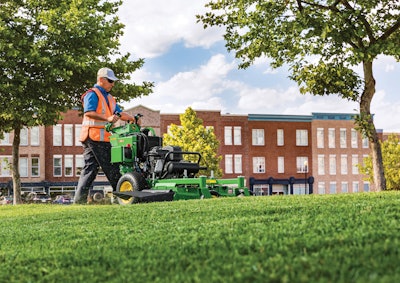
Stand-on, walk-behind, robotic, ride-on—which is best?
Like many questions in life, that depends.
Mower manufacturers weigh in on what factors need to be considered for each mower to meet its match.
Editor's Note: Jump to various parts of the article using the links below.
What to consider
What to consider
Jobsite
When determining which type of mower best meets their needs, landscape professionals should first consider the property type.
“Take into account the areas that need mowing and assess any obstacles like trees, permanent features or small entryways as well as the overall size of the yard,” says Jared Nuessen, senior marketing manager at Toro Co. “This will help determine the size and maneuverability needed in the mower you choose.”
Ron Scheffler, senior product manager at Bobcat Co., adds that landscape professionals should think about what type of business they’re trying to create.
“It would be difficult for a landscaper to say that he wants to do urban areas over here but larger more rural properties over there, and then he needs to have A, B, C and D type of mowers, and that’s inefficient for him.”
Brian Manke, product segment manager at Stihl, says geography may even play a role as well.
“For example, New England and Florida stand out as having a lot of fenced-in yards, and that dictates what our customers are buying,” Manke says. “It’s really about matching the mower to the type of property your business is maintaining.”
Manke adds that within those regions, there may be variations based on whether a landscaper performs more residential or commercial work.
“Say someone is maintaining a high-end property weekly where quality is the biggest priority. Horsepower may not be a big factor, but fuel efficiency is more important,” Manke says. “If someone is doing large properties that aren’t getting mowed as often, they’re going to want a 60-inch or 72-inch deck, and speed is ultimately the deciding factor, so the customer is asking, ‘what’s the biggest engine I can get because I want to go as fast as possible while maintaining the quality of cut.’”
In line with property type, landscapers should also survey the terrain, according to Chase Tew, production systems and business unit manager for John Deere.
“Do I live somewhere with a lot of hills and slopes or is my geography wet, like the Pacific Northwest?” Tew says. “All these things are extremely important to consider before selecting.”
From there, landscapers may also want to consider the end result.
“What is the customers' desired cut quality? How quickly will you need to finish the job?” Nuessen says. “These answers can change the size of the mower deck and what features the mower has.”
ROI
As costs creep higher for labor and equipment in the landscape industry, return on investment through productivity and durability are huge factors in mower choice.
“People want to know what they can purchase that’s going to save them time and that’s going to last,” Scheffler says. “If I’m the owner of the machine, I’m going to take care of that machine no problem, but some operators in a business setting may not be as considerate with the equipment compared to if it was their own. So, companies need something that’s durable and lasting.”
Lenny Mangnall, marketing product manager at Exmark Manufacturing, notes that as labor continues to be scarce, companies tend to look for machines to fill that gap.
“If you can outweigh the labor by having larger and more productive equipment, that’s big,” Mangnall says. “Companies are trying to focus on making their machines as productive and capable as possible.”
Mangnall cites features such as the ability to change the pitch of the deck from the operator’s seat without using any tools as additional time-savers.
Comfort
To keep crew members happy and on board, landscape companies should also consider the comfort of each mower.
After all, crews spend the larger part of their day running them.
“The comfort and productivity of your crew will help determine the overall success of your business,” Nuessen says. “This should be taken into consideration just as seriously as your customer needs when choosing the right mower, as a happy, comfortable crew directly translates to productivity.”
Trailer type
Truck and trailer size are other important considerations, according to Tew.
“Are you running a two- or three-mower setup on your rig? Will the mowers fit your setup?” Tew asks.
For trailers with limited space, stand-on machines may be the best option, says Nuessen.
“Contractors can potentially fit more equipment on their trailers by leveraging the smaller overall footprint of a stand-on machine when compared to zero-turn models,” Nuessen says.
Scheffler notes that fitting more pieces of equipment on a truck or trailer can bring down a landscape company’s overhead costs by minimizing the number of trucks and trailers it needs.
Maintenance
Landscapers should also zero in on machines that require minimal maintenance, Mangnall says.
“The total cost of ownership is more than just the upfront cost of the machine, so focus on productivity and also low-maintenance machines,” Mangnall says. “All of those maintenance items add up over time, and not only make you less productive but cost you money down the road.”
Scheffler says that for maintenance items that need to be taken care of, landscape companies should find a mower that allows the operator to do so easily.
“Can you update the grease or spindle or belt and get at it quickly and effectively?” Scheffler says, adding that mowers with deck systems that keep them clean can also save crews time and allow the mowers to cool more properly.
Regulations
Increasing amounts of legislation focused on reducing noise and emission levels have led to landscape maintenance businesses to purchase battery-powered equipment to stay compliant with regulations, says Katy Stringfield, senior manager of product marketing at Milwaukee Tool.
Nuessen agrees that battery-powered equipment can help with customer relations.
“If the customer’s property has strict guidelines around noise or emissions, your business may want to invest in a battery-powered mower over a gas-powered model,” Nuessen says.
Mower types
Depending on the considerations above, landscape pros can hone in on which mower best suits their needs.
Stand-Ons
First up, stand-on mowers are currently having a stand-out moment within the landscape industry.
With a foldable operator platform that instantly converts the mower to a walk-behind, stand-on mowers provide the operator with greater visibility to help get around obstacles and tight spaces.
“When it comes to specific types of mowers that are trending, we continue to see a noticeable bump in the overall popularity of stand-on mowers,” Nuessen says. “Many contractors enjoy the increased visibility, traction and stability on slopes that stand-on mowers can provide.”
Steven Benedict, product line manager, turf care, Kioti Tractor, adds that nimbleness and easy on/off access are other notable benefits of stand-ons.
“This becomes convenient when picking up debris,” Benedict says. “Operators can also easily duck behind the mower to get under low-hanging tree limbs or other objects.”
Scheffler says that because stand-ons are typically lighter than ride-ons, landscape professionals can access areas they typically can’t with ride-ons, for example, like the Gold Coast or Texarkana where there are sandy and wet conditions.
Mangnall also points to the machine’s comfortability as playing a role in their rise.
“Some guys like to stand a little better, and they can lean and reposition themselves while operating the equipment,” Mangnall says.
Because of these benefits, Scheffler says highly landscaped areas like cemeteries or places that have gardens tend to be ideal for stand-ons.
“It’s places where you need to be a bit more in control and see ahead of yourself,” Scheffler says.
Ride-Ons
Ride-on mowers, particularly ride-on zero-turn mowers, are ideal for tackling larger properties with minimal trimming while delivering a consistent and professional-looking cut.
“When covering multiple acres for multiple hours, a user would be better suited with a zero-turn or larger deck width stand-on,” Stringfield says. “They’re best suited for covering large areas in a short amount of time.”
Benedict notes that the larger size of the mower may allow for larger components.
“Oftentimes, you can get larger decks and/or larger fuel tanks on a ride-on mower,” Benedict says. “Ride-ons can also be paired with a bagger, which can be useful for fall cleanup or maintaining a lawn. Ride-on mowers are a little bit larger overall, which can lead to easier serviceability and access to components.”
Walk-behinds
Built for precision and control, walk-behinds are generally smaller and are ideal for areas with intricate landscaping or areas where a close cut is required.
“In smaller applications requiring less time, a user would be better equipped with a 21-inch or 30-inch walk-behind mower,” Stringfield says. “These mowers can be easily maneuvered and can fit into fenced-in backyards and more confined spaces. These mowers also provide better traction on slopes and damp ground.”
Tew adds that areas with a lot of detail work are ideal for walk-behind mowers.
“These are a great investment for residential backyards, complex commercial properties requiring a lot of trimming and properties with steeper hills and slopes or wet areas,” Tew says.
While they tend to be operated slower than other mowers, Benedict says this can be an advantage because it makes them easier to control.
Robotic mowers
When discussing autonomous mowers, it’s important to distinguish between the two types: smaller mowers that are permanently or semipermanently installed on a property and larger autonomous mowers that are integrated into a landscape operation.
“Small robots are best for smaller, highly visible areas of commercial or residential properties that want the same look every day, and larger robots are best for very large, wide-open spaces with minimal tree canopy that require a lot of human labor to mow,” Tew says.
Autonomous mowers can also help with efficiency.
“They can help productivity by allowing two applications to happen at once: Users can string trim while the mower is mowing,” Stringfield says. “It can also help with labor shortages by removing the need for someone to run the mower.”
Scheffler says larger autonomous machines work well for sports turf areas, wide-open fields and even areas where operators may not feel as comfortable such as around slopes or near water features.
“There are some spots that can get tricky, like around a pond or an embankment, where the operator doesn’t feel at ease on the machine,” Scheffler says. “Those are great opportunities for autonomy to keep that person extra safe, and it also allows you to mow more areas that people just don’t want to get into.”
Other trends
Alternative fuels/fuel efficiency
As the demand for more sustainable products continues, many landscape professionals are looking at battery-powered equipment as the answer.
“Having battery-powered equipment as part of the company’s fleet also increases the options to work for customers in highly populated urban areas with noise ordinances,” Nuessen says. “As the technology continues evolving, battery-powered mowers offer landscape professionals more flexibility and easily increase productivity and efficiency. Most battery-powered mowers are no longer limited by run time or decreased power compared to gas models.”
Manke notes that while this trend started out with merely curiosity, a lot of the questions he’s received at industry events have transitioned to implementation questions.
“People want to know what we recommend, how they should handle charging, how many batteries do they need, where they should charge the batteries,” Manke says. “In a lot of cases, there are lower operating costs, and you don’t have to worry about maintenance.”
Stringfield predicts that in the next three to five years, there will be a continued focus on the progression within battery-powered capabilities centered around power output, capacity, power density and charging.
“There has been great progress in this area, but improvements are still needed to close the gap with gas products in terms of run time, recharge rate in order to meet the demanding duty cycles of the professional use,” Stringfield says. “By understanding and identifying the extent of their application, users will be able to equate that with the number of battery packs needed to keep users productive. They will also need to identify the right charging solutions and set up to understand if they will have access to power during the day or will need to plan and charge all their batteries overnight. The charging time of the battery packs would also be another thing to consider when determining how many packs will be needed to get a user through an entire workday.”
On the other hand, Scheffler says that while there is still increasing interest in electric, it’s not as quick to catch on as some had originally anticipated.
“It’s not as low cost as a traditional commercial mower, so people are thinking about how the economy is playing into the purchase,” Scheffler says. “It’s still a trend, but it’s just not going as fast as when everybody started jumping into the ring. However, people will soon understand that the total cost of ownership is better for their business, and they can work on more days.”
Benedict agrees that landscaping community tends to be hesitant to pick up new technologies until they are well proven in their specific application.
“Electric mowers are still a way off from mass adoption, as costs are still high, and there is a lot of work to make the switch regarding charging infrastructure,” Benedict says.
However, for some technology that has been around for a while, like electronic fuel injection, there is a larger adoption of some of these technologies.
“Technologies that have been prevalent in the automotive industry are starting to become more common in the landscape industry. Engines are becoming more powerful and more fuel efficient,” Benedict says.
Software/tech:
In the future, Nuessen thinks more landscape companies will begin to choose mowers that come with connected software that allows landscapers to GPS track their equipment, automate card-on-file invoicing, optimize routing and provide on-demand estimates and timecard tracking.
“These are all things that software can provide to contractors as they look to be as efficient as possible and potentially scale their businesses,” Nuessen says. “Savvy contractors are quickly understanding the advantages that come with the integration of robust and effective business management software into their businesses. Our best advice for contractors is to find software with the features and functionality that best fits the needs of the business.”
Tew says that connected machines are all about creating value.
“Having connected machines in a meaningful way will provide data and analytics that contractors have never had before,” Tew says. “All these technologies will allow contractors the data and tools to manage their business better than years prior.”

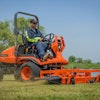


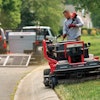
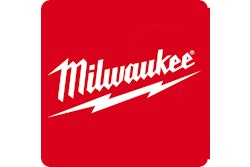
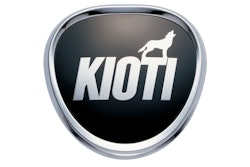


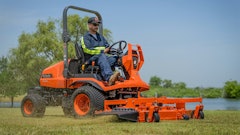







![Gravely Pro Turn Mach One My23 Dsc03139 Edit 1200x800 5b2df79[1]](https://img.greenindustrypros.com/mindful/acbm/workspaces/default/uploads/2025/10/gravely-pro-turn-mach-one-my23-dsc03139-edit-1200x800-5b2df791.BucBnDoN22.jpg?ar=16%3A9&auto=format%2Ccompress&fit=crop&h=135&q=70&w=240)



